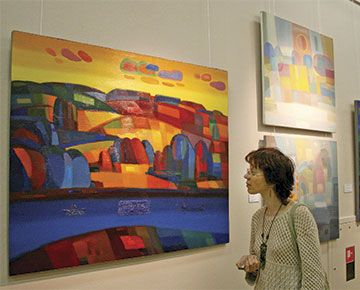Mr. Bushchik’s works are incredibly life-affirming, with a sense of purity such as is usually only found in children’s works, with their multicoloured houses and trees. Painting in oils and watercolours, his canvases spark with geometric shapes and colour tones, creating their own poetry and rhythm.
He names each work to evoke a colour. Space of Fire, for instance, is filled with warm reds, although no actual flames. Wide stripes represent the desert and the sky, separated by a horizon, the sun a small yellow spot. Inspired by his travels, his landscapes portray emotional responses rather than realism. They are as far removed from photographic images as it’s possible to be. Not only art critics but also ecologists see his lofty passion and philosophical soul.
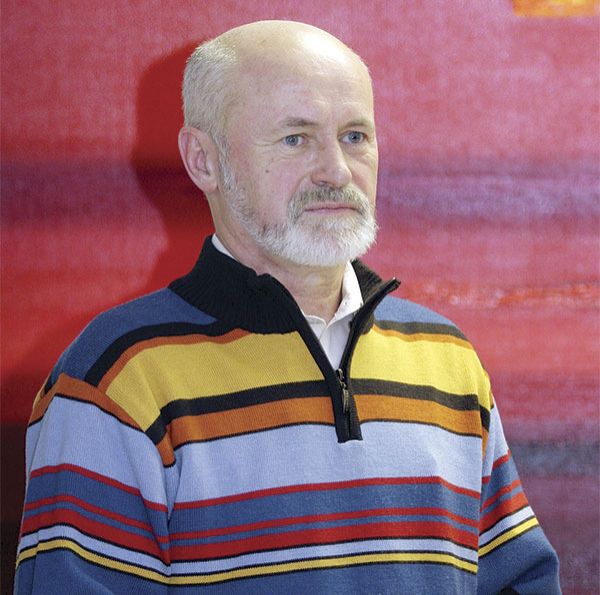
I remember a personal exhibition by Mikalai Bushchik. One of the National Art Museum’s halls stood out from the others, with subdued lighting above each canvas, which created a certain atmosphere of intimacy, depth and mystery — hinting at the ‘unknown’ in the Universe. Upon entering, I felt compelled to whisper, having no wish to disturb the tranquillity, as if I might scare off a rare bird. People say that only a true master can manipulate such a response.
Game of imagination
“Since I can remember, I’ve loved to draw,” admits Mikalai. “At first, I simply copied but, when I was 5, I surprised my parents by drawing a near perfect circle by hand (they measured it with compasses). When I was 14, my city grandparents sent me, a boy in the heart of rural Russia, my first paints. I began to reproduce works by famous artists. My Bogatyrs of Vasnetsov was hung in the school staff room but my favourite was my copy of Levitan. I’ve always appreciated the classics: their depth of thought and feeling. Not so much the outer side of things as the essence of phenomena and the emotional side.”
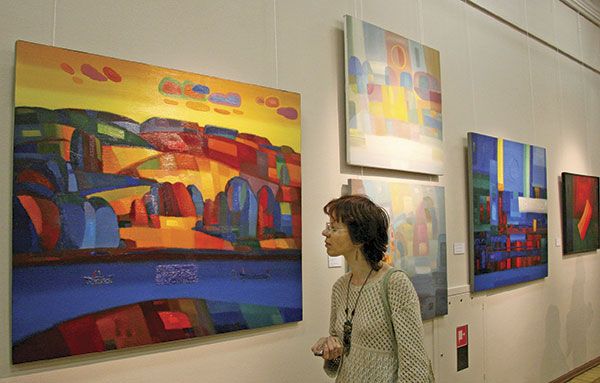
At the exhibition of Mikalai Bushchik’s works
He studied at the Art School in Krasnodar and at the Theatre and Art Institute in Minsk and has since dedicated himself to pursuing his own artistic satisfaction: the word ‘must’ does not exist for him. He draws what is important to him, seeking answers to his own questions and those eternally relevant.
I’ve always been surprised at how Mikalai combines colour to create space and form, as if he thinks exclusively in tones and shades. Every emotion, perception and natural phenomenon is perceived as a colour variation. It is his vision, rather than an abstraction, based on his experience as a traveller. Through force of personality and talent, he creates violent elements of colour never normally witnessed in Belarusian painting.
Memories of impressions
When he is ready, he creates, and defines inspiration as ‘the willingness to draw’. He often makes small sketches, sitting outside or by a window, thinking about friends, people and events: his memories and impressions. Sometimes, he listens to music, noting that he enjoys original pieces: classical works, and modern jazz based on improvisation and the expression of self, and emotions. He admits, “I try only to avoid anything which appears ‘destructive’; music should have structure and harmony.”
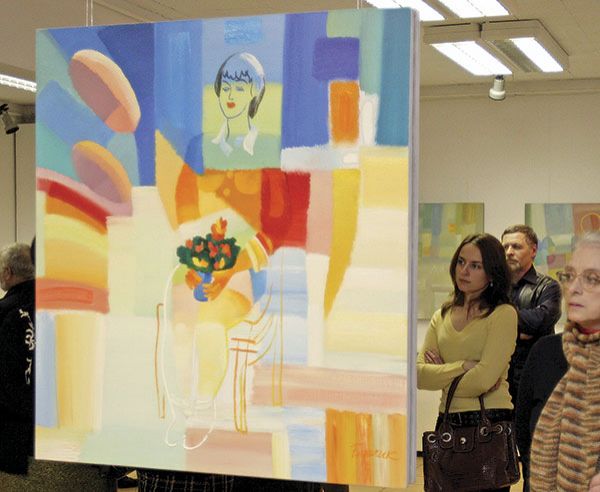
In such a way images reveal
He believes that art is organic, with its own image and the notion of time, and that each master has his own opinion, saying, “I think that a masterpiece can be any work in which an artist, composer or poet combines his own perspective with that of the wider world. Such people are pioneers: artists are the eyes of God for all mankind; musicians are God’s ears; and poets share the word of God.”
Forever in harmony
I feel the harmony of which he speaks: his permanent state. There is peace and tranquillity in him and his works. I ask how he maintains this state and he replies that we need to be true to our ‘chosen path’. “Be faithful to your love of life and the concept of ‘love’. Everything depends on your wishes and choices: the path through which your soul and mind sound together, singing with one voice. It won’t make you rich but any other path won’t bring harmony, regardless of wealth. It’s not easy to make such choices: some are pragmatic, while others are ambitious. Each of us must decide what is of importance to us.”
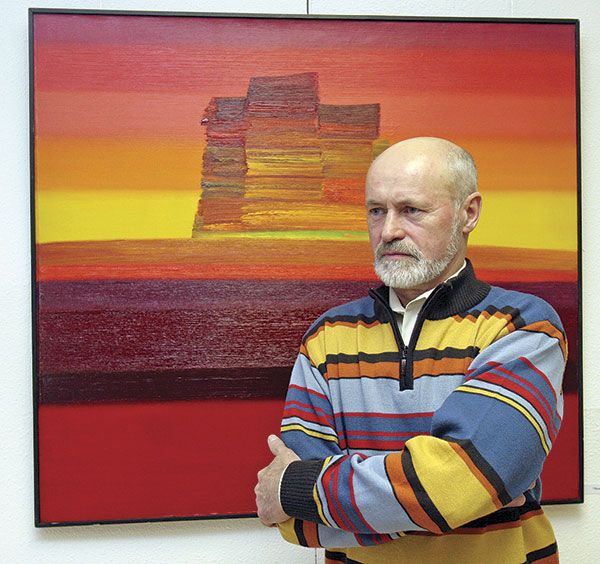
Spoken of as a master with an exclusive feeling for colour, there’s no doubt that his works radiate sunshine. They could illuminate the gallery in the absence of electricity! They are a triumph and a mystery: how does this ‘outstanding colourist’ (as many call him) achieve such effects?
I always like to take a fresh look at myself and offer something new: new compositions and new opportunities for the soul.
What’s changed in your works?
Time has changed. We feel it in our urban environment, and in the attitude of people: their impetuosity or calm. We feel it in the rhythm of conversation and mutual relations, in the rhythm of our roads, our thoughts, and of online communication. Time is changing these rhythms, and our accompanying emotions, each of which has its own colour: hot or cold. I have no aspiration to be a journalist, creating chronicles; I leave that to the experts. Rather, I aim to explore the aesthetic and spiritual elements of our time.
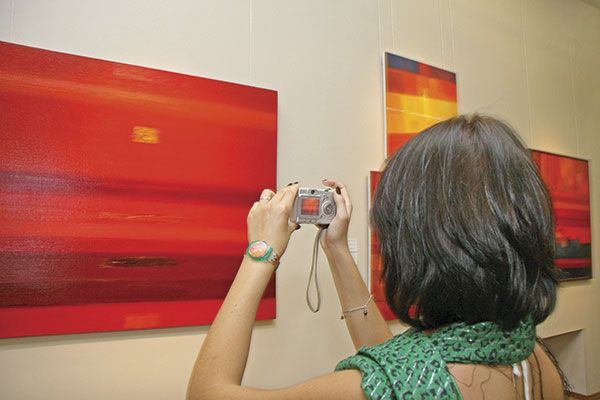
Can colour ‘solve’ everything: plot, images, and composition?
Certainly, it can. I try to solve everything with colour; as to whether I’m successful, the future will decide. Now, there are only impressions, with which you may agree or not; however, they should excite you, being unexpected. An artist transforms what he sees into art: the harmony of the world and feelings of happiness. I wish that others could understand, avoiding the drama of extremes, as they see in action films and maudlin soap operas. The world is perfectly harmonious. Even global corporations, polluting nature, are cautious, taking decisions on environmental and poverty issues. In considering the future, people tend to think about their children, which is what I reflect in my pictures; they are more symbolic than narrative or chronological.
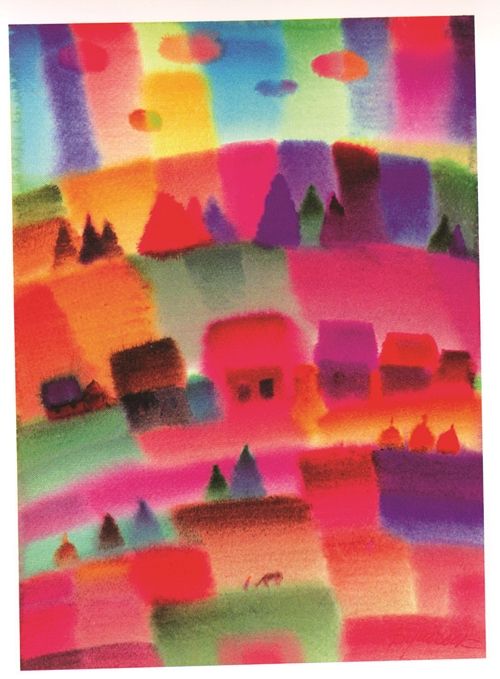
M. Bushchik. ‘Rainbow of the Earth’, 2003
In one interview, you spoke of leaving behind domestic themes…
I’m interested in painting as an open art, speaking to people beyond the restriction of borders or languages, regardless of skin colour or politics. Art must be apparent without the need for translation.
Are your water-colours born of your travels?
Yes, they allow me to show my personal impressions of travel, and of chamber music: Belarus, Lithuania and Bulgaria. Artists never stop travelling — even if they only look out of the window. Water-colours allow us to show the beautiful gift of life. Some paintings are more like photographs than artworks exploring emotions. Technical skill has its place, and satisfies an aesthetic interest, but an artist needs to voice what is seen by his soul, telling his story through a melody of colour. There is the reality of nature and the reality of an artist’s perceptions, which are often unique.
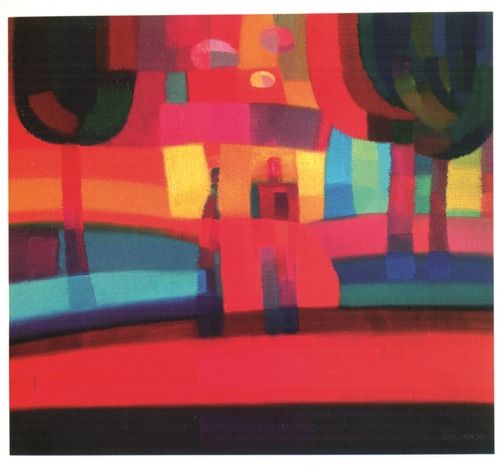
M. Bushchik. ‘Meeting and breakup’, 2003
Do journeys inspire you?
Journeys are interesting in offering us new impressions, seeing the world as children do. They are essential to me in providing the joy of pure feelings. I only return to a place when I’ve had time to forget, remembering only symbolic things. Some draw trees or stones but an artist’s themes should be humanity, the Earth and space: quite other things.
So, does your destination matter?
I don’t want to travel as a tourist, and lack interest in exoticism for its own sake. It’s important to understand what you see and gain aesthetic impressions. Perhaps go to Australia, America or Africa…
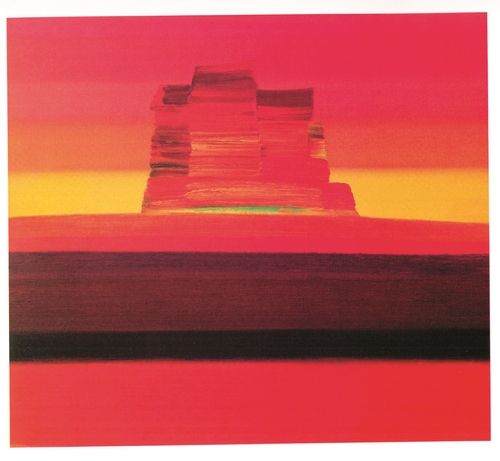
M. Bushchik. ‘New Babylon’, 2001
Is Europe interesting?
Certainly, as Europeanised Asia is. The Far East may be beautiful but isn’t for me. Our European culture is more calm, contemplative and minimalistic.
Do you sell many paintings?
Fewer than I used to, as people rarely purchase original works of art these days. They might buy print reproductions of landscapes, showing streams and birches, from department stores. I view purchasing a work of art as an act: it’s not in the same league as buying a pair of socks. I hope that the situation will change. All I can do is continue working and contemplating life, the world, God and the nature of humanity. These are the things that I care about.
You’ve always said that culture and art are vastly different.
Yes, culture is the soil in which art grows. Our way of life is culture, as are all those notions which feed the soul. Art is light and harmony. Speaking more pragmatically, we all have the capacity to be creative. How we achieve this is ‘art’.
By Victor Mikhailov









